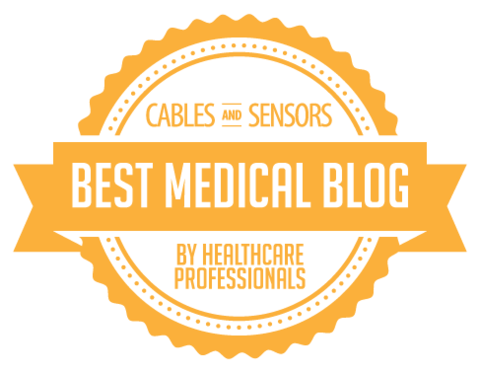Weight Loss: What Causes Weight Cycling?
Do you find you find your weight frequently yo-yoing up and down? Do you tend to go through repeat periods of experiencing exciting weight loss followed by discouraging weight regain?
According to the Federal Weight Control Information Network, the cycle may be small, say 5-10 pounds up and down, or large, more than 50 pounds lost and regained repeatedly.
Weight Cycling Causes
The reasons for the weight cycle are often linked to the following four causes:
- Selecting a diet that is too extreme or unrealistic for the long term. This would include “fad” or “crash” diets. They tend to be hard to stick with because you start to feel deprived.
- Using poor techniques that cause you to overeat, such as skipping meals or doing well with your diet during the week but “taking a break” on weekends.
- Unrealistic goals – Yes it’d be great to say you can fit into your old high school jeans, but is that really realistic?
- Not surrounding yourself with a support system. Are the people around you health conscious and supportive of your new healthy actions or do they tempt you to stray?
Difficulty Stopping the Cycle
Oftentimes, your body finds a weight it likes and doesn’t want to change. So, you have biology working against you.
Your body uses hormones, such as leptin, to monitor your calorie needs and body fat. When you start to lose weight hormone levels change and your body reacts. Usually your body thinks “I’m starving” and switches to conservation mode by decreasing your metabolism (the rate your burn calories) to conserve energy and protect fat stores. In other words, you body is preparing for a famine. When this occurs you’ll typically begin to feel the urge to eat more.
So, let’s say your calorie intake gradually goes back up to your pre-diet level. At this level you should maintain your previous weight, but since your body has dropped your metabolism, your caloric needs are lower. That means your typical calorie intake which in the past maintained your weight, now leads to weight gain.
A cycle that is very difficult to overcome, but I don’t know many who say losing weight is easy.
All the best,
Lisa Nelson RD
Be Heart Healthy and Lose Weight
Heart Health – Are you on the right path?
Did you know that every March since the 1970’s we have been celebrating National Nutrition Month? For those in a healthcare profession this is a time extra emphasize is placed on nutrition education and getting the message out to you. How can you get the most out of this time focused on nutrition? Every March provides you an opportunity to take an annual inventory of your nutrition habits. Are you “fueling” your body the way you want to ensure weight loss and heart health?
If this is the first time you have taken “inventory” focus on just a few areas. I will help you narrow it down by starting with beverages, snacks, and dining out. Do you select the healthiest choices in these areas?
Beverages
What is sitting on the corner of your desk or in the cup holder in your car? Soda, coffee, water? If you are a soda drinker, consider what you can do to cut back. A 12 oz. can of regular soda contains about 150 calories. If you drink one can everyday you consume 4200 soda calories each month and 50,400 calories each year. This is equal to an extra 14 ½ pounds of body weight. What are you adding to your coffee? Frequent Starbucks consumption, or adding cream and sugar to your coffee means extra calories expanding your waistline. Positive steps towards being healthier – Switch to diet soda to drastically decrease sugar and calorie intake. Try nonfat dairy creamers, less sugar and cream, or adding sugar substitutes to your coffee. Save dollars and calories by brewing coffee at home and have Starbucks for the occasional treat. If you are toting around a bottle of water you are doing great. Everyone should be consuming six to eight 8-oz. glasses of water daily. Water is the beverage our bodies need and crave to keep us replenished and feeling our best.
Snacks
Are you heading for the vending machine for your afternoon snack? Most vending machines contain high fat and high sodium products. Forgo the Swiss cakes by bringing snacks to work with you. You know you are going to have an afternoon craving, so plan ahead. Some good snack choices include fruit, yogurt, crackers and cheese, or a handful of nuts.
Dining Out
Is the drive in lane your destination several evenings after a long day of work? Most fast food is deep fat fried and includes significant fat, calories, and sodium. If you are tired and do not want to deal with cooking a meal at home you can select healthier options at the drive through. Opt for products that are not breaded, such as a grilled chicken sandwich. Forgo the fries and get a yogurt, side salad, or fruit to go with your sandwich. Your heart will thank you.
Just remember when March rolls around next year to take another inventory. Expand to other areas, such as fruit and veggie intake, omega 3’s, whole grains, etc. If you evaluate how you are doing every year and make modifications you are taking positive steps towards a healthy long life.
All the best,
Lisa Nelson RD
Be Heart Healthy and Lose Weight
3 Tips to Prepare Healthy Meals Efficiently
Who likes spending time in the kitchen? Not I! Here are a few tips to get in and out of the kitchen quickly with a well-balanced nutritious (and good tasting!) meal.
Here are 3 tips to prepare meals efficiently:
Keep it simple – Gourmet meals can be saved for special occasions. If you want to prepare a meal quickly opt for recipes with fewer ingredients that do not require elaborate preparations.
Make it a habit – Prepare the same meals on a fairly regular basis and you’ll be able to throw ingredients together without thought.
Multi-tasking – Now this is usually frowned upon, but when it comes to preparing a meal it’s good to juggle more than one task at a time, such as water on to boil while you prepare the meat and veggies.
All the best,
Lisa Nelson RD
Heart Healthy Tips
http://www.hearthealthmadeeasy.com
Weight Lifting and Blood Pressure – How does weight lifting impact blood pressure?
 Lifting weights can cause a temporary, but dramatic blood pressure rise. Systolic blood pressure can increase up to 350-400 mm Hg and diastolic blood pressure to 150 mm Hg even if your blood pressure is typically a healthy level of 120/80 or less.
Lifting weights can cause a temporary, but dramatic blood pressure rise. Systolic blood pressure can increase up to 350-400 mm Hg and diastolic blood pressure to 150 mm Hg even if your blood pressure is typically a healthy level of 120/80 or less.
Long-term high blood pressure is linked to arterial endothelial dysfunction. The endothelium is the inner lining of your artery walls. Endothelial dysfunction can result in the hardening of artery walls. Researchers have been monitoring the effects of short duration rises in blood pressure, such as what occurs during strength training, to determine the effect on endothelial function. It has been determined that acute rises in blood pressure impairs endothelial function in untrained individuals and regular resistance training helps protect against vascular dysfunction.
At one time, weight lifting was discouraged if you lived with high blood pressure. However, this is no longer the recommendation. Regular physical activity that includes moderate strength training is one of many natural ways to lower blood pressure. A study published in Hypertension monitored participants completing resistance training 2 to 5 times per week and found strength training to help lower resting blood pressure.
Including strength training and aerobic physical activity can be a positive step towards lowering blood pressure; however, you must consult your physician before beginning an exercise and/or strength training program. Strength training is not recommended if you have uncontrolled high blood pressure, untreated heart disease, or an irregular heart rate.
The current American Heart Association recommends individuals 18 to 65 years-old include moderate intensity aerobic physical activity 5 days a week for a minimum of 30 minutes and strength training at least twice a week.
Be sure to sign-up for the free e-course 7 Natural Ways to Lower Blood Pressure.
Physical Activity – How much physical activity is recommended?
 By now you know being heart healthy and losing weight go hand-in-hand with physical activity. If you want to lose weight and keep it off, you have to be regularly active. If you want to lower triglycerides you have to be active. If you want to raise HDL you have to be active.
By now you know being heart healthy and losing weight go hand-in-hand with physical activity. If you want to lose weight and keep it off, you have to be regularly active. If you want to lower triglycerides you have to be active. If you want to raise HDL you have to be active.
The Health and Human Services Department sets physical activity guidelines after reviewing a good decades worth of research related to physical activity and health.
Here’s a quick review of the adult guidelines:
- All adults should avoid inactivity.
- To see substantial health benefits, include at least 150 minutes (2 ½ hours) per week of moderate-intensity activity. If times a factor, you can see the same benefits by bumping up the intensity and being vigorously active 75 minutes (1 hr. 15 min.) each week.
- If you want to take things to the next levels, more extensive health benefits are seen when activity is increased to 300 minutes (5 hours) per week of moderate intensity activity or 150 minutes of vigorous intensity aerobic activity.
- Don’t forget strength training! You want to include all major muscle groups on two or more days each week. Especially beneficial as we age and see a decline in metabolism (and corresponding weight gain) if muscle mass is not maintained.
All the best,
Lisa Nelson RD
Lower Cholesterol – Do you understand your lab results?
It’s very possible your MD orders lab work and you have no idea what or why you’re having blood drawn. Well, let’s clear up the confusion when it comes to your cholesterol labs.
The terms “lipid panel”, “lipid profile”, and “lipoprotein profile” are used interchangeably to order the same set of labs. To make reading this easier, I’m going to use “lipid profile” from here on out.
“Lipid” is simply a medical term for “fat”. A lipid profile measures fatty substances in your blood. Cholesterol is one type of fat.
When you eat food containing cholesterol or when your body produces cholesterol and releases it into your bloodstream, the cholesterol will attach to a protein. This package of cholesterol plus a protein is called a lipoprotein (lipid or fat plus protein). A lipid profile measures lipoprotein levels in your blood.
Lipid profiles include five components:
LDL – “bad” cholesterol
LDL (low-density lipoprotein) cholesterol carries mostly cholesterol, some protein, and minimal triglyercerides throughout your circulation. LDL should be less than 130 mg/dL, ideally less than 100 mg/dL.
VLDL – “bad” cholesterol
VLDL (very low-density lipoprotein) cholesterol contains minimal protein and mainly transports triglycerides. VLDL should be less than 40 mg/dL.
Triglycerides
Triglycerides are a type of fat in the blood, not a type of cholesterol. Triglycerides are frequently used to estimate VLDL (“bad”) cholesterol. Here’s the calculation: triglycerides divided by 5 equals VLDL cholesterol. Triglycerides should be less than 200 mg/dL, ideally less than 150 mg/dL.
HDL – “good” cholesterol
HDL (high-density lipoprotein) cholesterol removes cholesterol from your bloodstream and carries it back to the liver. I like to think of HDL as a vacuum cleaner, picking up cholesterol LDL leaves behind in your arteries, the more HDL the better. HDL should be greater than 40 mg/dL, ideally greater than 60 mg/dL.
Total cholesterol
Cholesterol is essential to bodily functions, such as building cells and producing hormones. However, too much cholesterol will build up on artery walls, form a plaque, and potentially “plug” the artery resulting in a heart attack or stroke. Total cholesterol is calculated from the above components (Total cholesterol = HDL + LDL + VLDL). Total cholesterol should be less than 200 mg/dL.
Do you see how if you only know your total cholesterol, you only have one piece of the lipid profile?
Now, sometimes your results will include ratios or a risk score. Here’s an explanation of what those numbers mean.
Risk Score
A risk score is based on you lipid profile results, sex, age, family history, and various other risk factors. If you have a high risk score for heart disease, it’s best to speak with your MD to evaluate your risk score.
Cholesterol:HDL Ratio
You want a low ratio of cholesterol to HDL. A ratio lower than 4.5 is good, but 2 or 3 is best. You can calculate your cholesterol to HDL ratio by dividing total cholesterol by HDL. For example, your total cholesterol is 195 and your HDL is 55. 195 divided by 55 equals a ratio of 3.5.
It’s actually not your total cholesterol that has the greatest impact on your heart disease risk. The ratio of total cholesterol to HDL is a critical factor. If your total cholesterol is less than 200, but your ratio is 5, you are still at increased risk for developing heart disease.
LDL:HDL Ratio
This ratio compares the amount of bad (LDL) cholesterol to your good (HDL) cholesterol levels. You want a ratio less than 3.5, ideally less than 2.5. To calculate your ratio, divide LDL by HDL. For example, your HDL is 55 and LDL is 100. 100 divided by 55 equals a ratio of 1.8.
Triglyceride:HDL Ratio
A low ratio of triglycerides to HDL is best, ideally less than 2. To calculate your triglyceride to HDL ratio, divide your triglycerides by your HDL. For example, your triglyceride level is 200 and your HDL is 55. 200 divided by 55 equals a ratio of 3.6.
Lipid profiles are commonly ordered to assess your heart disease risk. Your doctor or dietitian will use the results to determine the best treatment to reduce your risk.
A lipid profile is beneficial, because you know your “good” cholesterol level and “bad” cholesterol levels. The interventions that work best to raise HDL and lower LDL differ, so knowing all your numbers helps you make the most effective changes.
You’re probably wondering why a lipid profile isn’t always ordered versus simply checking your total cholesterol (and possibly HDL). Cost and time always play a part and if your risk for heart disease is low, then a quick and less expensive screening makes sense. If you are at increased risk, a more complete assessment (lipid profile) may be more appropriate. Everyone’s situation is unique, so it’s best to discuss what’s right for you with your MD.
Now, to receive regular heart health and weight loss tips from dietitian Lisa Nelson, subscribe to The Heart of Health today!
All the best,
Lisa Nelson RD



